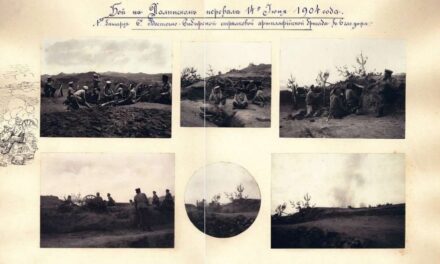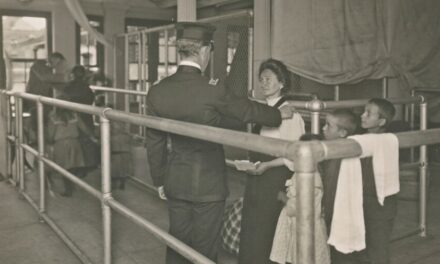Our family histories are often shaped as much by place as by lineage. From bustling cities to rural villages, the environments our ancestors inhabited left lasting imprints on their lives—and ours.
Understanding the geographical context of family history can reveal patterns of migration, influence career paths tied to local industries, and offer glimpses into cultural traditions unique to certain regions. This article explores the powerful role of location in shaping family narratives, uncovering how our ancestors’ ties to specific places contribute to our own identities and heritage.
Table of Contents
Mapping Ancestral Movements: Understanding Migration Patterns Over Generations
Migration patterns tell a fascinating story about why and how our ancestors moved across regions, countries, and even continents. For many families, the reasons for these migrations are rooted in broader historical forces—such as economic opportunities, political upheaval, or environmental changes—that pushed individuals and families to seek new lives elsewhere. By tracing these patterns, we gain insight not only into individual family members but also into the larger societal shifts that influenced entire generations.
To begin mapping these movements, start with census records and passenger lists, which often provide crucial details on an ancestor’s location at various times. For example, census records can indicate whether a person moved within the same country, while passenger lists reveal transcontinental journeys, often with specific arrival ports or departure dates. These documents help pinpoint specific migration events and provide clues about the timing and reasons behind the move.
Next, consider examining historical events that might have driven migrations within your family. Economic downturns, such as the Great Depression, triggered large-scale movements as families sought financial stability. Similarly, wars and political conflicts, like World War I or regional conflicts, forced many to flee their homes. Many family trees are marked by these events, which can often be traced in military records or personal documents like letters, providing context around decisions to relocate.
Environmental changes also played a significant role in family movements. The Irish Potato Famine, for instance, drove many families to emigrate in search of food security and stability. In the United States, the Dust Bowl pushed families from the Great Plains to the West Coast in the 1930s. By considering environmental impacts, you can uncover lesser-known yet critical influences on your ancestors’ decisions to migrate, painting a fuller picture of their lives.
Mapping ancestral migrations across generations offers a way to understand the resilience and adaptability of past family members. Each journey reflects not only a physical movement but also an emotional leap into the unknown, driven by hope, survival, and the promise of a better future.
Roots and Roles: How Local Industries Shaped Family Occupations
The occupations of our ancestors were often deeply intertwined with the economic landscape of their surroundings. Local industries influenced the skills passed down through generations, the daily rhythms of family life, and even the social status our forebears held within their communities. Examining these connections between place and profession provides insight into not only what our ancestors did for a living but also how they were shaped by the industries that defined their regions.
In mining towns, for instance, entire families—sometimes across multiple generations—worked in coal mines or supported the mining industry in various roles. Mining communities fostered a culture centered on hard labor, resilience, and close-knit solidarity. Similarly, families living in fishing villages were often involved in the demanding and sometimes dangerous fishing trade, with skills honed on the sea passed from parent to child. These industries shaped family identities, imbuing a sense of pride and shared responsibility in carrying on essential roles within the community.
Agricultural regions tell a similar story, where family occupations were tied to the cycles of planting and harvest. Rural areas focused on farming often saw entire extended families working together on land passed down through generations. The skills required to cultivate crops or raise livestock became deeply rooted in the family’s knowledge base. With each season, a family’s livelihood depended on their expertise in managing the land, making farming not just an occupation but a way of life that wove nature’s rhythms into the family’s daily existence.
In urban areas, the rise of industries like textiles, steel, and manufacturing shaped families in different ways. Industrialization brought opportunities but also demanded adaptability. Many families were drawn to factory work, where men, women, and even children worked long hours to earn a living. These urban-based industries influenced family dynamics, often pulling members from rural areas into bustling city life and reshaping traditional family structures.
Understanding how local industries influenced family occupations adds depth to our appreciation of ancestors’ daily lives and choices. It provides a window into the skills, traditions, and identities that were crafted in response to the economic forces around them. Each industry, from the rural fields to the bustling factories, tells a story of adaptation, survival, and continuity that has left an indelible mark on family histories.
Regional Traditions and Customs: Cultural Markers in Family History
Our ancestors’ lives were shaped not only by their work and movements but also by the regional traditions and customs that formed the cultural fabric of their communities. From unique celebrations to local dialects and culinary specialties, these customs provide a fascinating glimpse into the daily lives, values, and beliefs of our forebears. Understanding these cultural markers can help us appreciate the subtle influences that have woven their way into our family stories, preserving regional identities across generations.
One of the most vivid ways regional customs come to life is through festivals and celebrations. Many communities have annual events rooted in centuries-old traditions, marking the seasons, harvest times, or local saints. These gatherings often involved elaborate ceremonies, specific songs or dances, and communal feasts. For example, in some Scottish regions, gatherings like Hogmanay (New Year’s Eve) were celebrated with a specific “first footing” ritual where the first person to enter a home after midnight brought luck for the coming year. This and other community-centered practices often connected families across generations, creating shared memories and a sense of identity.
Language and dialect also play a significant role in distinguishing regional heritage. Certain words, phrases, or expressions unique to specific areas can reveal much about family origins and even local attitudes. Dialects passed down within families served as a linguistic badge of belonging, a way to identify with one’s roots, and often carry cultural nuances that enrich family history. For instance, descendants of Yorkshire families might recall colloquialisms or turns of phrase that reflect a direct tie to their ancestors’ way of speaking. Tracking dialect changes over time and across generations can help us map out family movements and their integration into new areas.
Cuisine is another powerful cultural marker in family history. Recipes passed down through generations offer a tangible connection to family heritage, often rooted in the ingredients and cooking methods specific to a region. A Cornish pasty recipe, for example, may have been perfected by a family whose ancestors worked in Cornwall’s mines, while the New Orleans gumbo recipe hints at French, Spanish, and Creole influences. Exploring traditional family recipes reveals not just the tastes of the past but also the environment and resources that shaped them, providing a sensory link to ancestors’ daily lives.
Even family customs around home and daily life, like holiday rituals, clothing styles, or superstitions, can reflect regional traditions. Families from rural areas might have distinct practices surrounding planting seasons or rituals to ensure good weather, while seafaring communities could have customs designed to bring luck to those at sea. Understanding these practices provides insight into how ancestors adapted to their environment, incorporated local beliefs, and expressed cultural values.
Regional traditions and customs are valuable cultural markers that preserve the unique identities of places and people. By exploring these traditions in family history research, we can gain a richer understanding of our ancestors’ lives beyond dates and names, recognizing the regional influences that have been carried through generations and continue to shape our identities today.
Tools and Techniques: Using Geographic Records to Unlock Family Stories
Geographic records offer a treasure trove of information for genealogists, providing context around where ancestors lived, worked, and traveled. Understanding the locations tied to family history can illuminate connections between places and events, and uncover personal details that breathe life into family stories. From historic maps to property records, these resources enable researchers to trace ancestors’ paths, examine their surroundings, and deepen their understanding of the communities in which they lived. Here are some essential tools and techniques to help unlock family stories through geographic records.
-
Historic Maps and Atlases
Maps and atlases from the past are invaluable for pinpointing where ancestors lived and seeing how those places have changed over time. Many online resources provide access to maps dating back centuries, offering insights into everything from neighborhood layouts to major geographic features that shaped communities. The National Library of Scotland offers an extensive collection of historic maps, including coverage of Scotland, England, and Wales (https://maps.nls.uk/). For U.S.-based research, the Library of Congress hosts an impressive map archive (https://www.loc.gov/maps/).
Historic maps can reveal how close ancestors lived to resources like rivers, mines, or ports, which may explain their occupations or migration patterns. Overlaying old maps with modern ones allows researchers to trace exact locations, providing context about their neighborhoods, the distance to work or school, and even social structures.
-
Property and Land Records
Property and land records are excellent resources for understanding where families lived, the type of property they owned, and any changes in ownership over generations. These records often contain details on acreage, structures, and property values, helping to illustrate an ancestor’s economic status or role in the community.
In the UK, the National Archives offers land tax records, title deeds, and estate records (https://www.nationalarchives.gov.uk/help-with-your-research/research-guides/property-and-land/). For U.S. researchers, the Bureau of Land Management’s General Land Office Records site provides access to federal land patents, grants, and survey plats (https://glorecords.blm.gov/). Understanding property ownership can reveal family wealth, inheritance practices, and even disputes that were significant to family history.
-
Census Records with Geographic Insights
Census records not only provide personal information about family members but often indicate their exact address or neighborhood, allowing you to visualize where they lived and worked. Online genealogy platforms like Ancestry (https://www.ancestry.com/) and FamilySearch (https://www.familysearch.org/) offer census records from multiple countries, complete with geographic information to map family locations over time. Some census records even include detailed information about property ownership, household members, and neighbors, painting a fuller picture of community and social dynamics.
Using census records in combination with mapping tools like Google Earth or Google Maps can help you plot out where ancestors lived, how far they traveled for work, or if they lived near other family members. This geographic perspective adds richness to a family narrative by revealing the physical spaces that shaped their daily lives.
-
Migration and Travel Records
If your ancestors moved from place to place, migration records, ship manifests, and passenger lists can offer insights into their journeys. These documents often contain specific ports of entry or departure, dates of travel, and even reasons for emigration. The UK National Archives holds a variety of immigration and emigration records (https://www.nationalarchives.gov.uk/help-with-your-research/research-guides/migration/), while Ellis Island’s database provides details on passengers arriving in the U.S. (https://www.libertyellisfoundation.org/).
With these records, researchers can identify migration trends within families, discover new locations to investigate, and contextualize the social and economic factors that influenced these movements.
-
Local Historical Societies and Archives
Many regions have local historical societies or archives with unique geographic records, such as regional maps, land surveys, and town records, often not available online. Visiting these archives (or accessing their online collections where available) can provide specialized information about local industries, significant historical events, or unique cultural practices.
The Federation of Family History Societies (https://www.ffhs.org.uk/) is a helpful starting point for locating regional societies in the UK. In the U.S., the National Genealogical Society offers resources and links to local societies (https://www.ngsgenealogy.org/).
Bringing it All Together
Combining these geographic records with family stories and historical events allows genealogists to paint a rich and nuanced picture of their ancestors’ lives. By examining where they lived and the environment around them, you can better understand the challenges they faced, the opportunities they pursued, and the legacy they left behind. Geography is more than a backdrop in family history—it’s a powerful tool for unlocking stories that shape our identities and deepen our connections to the past.




